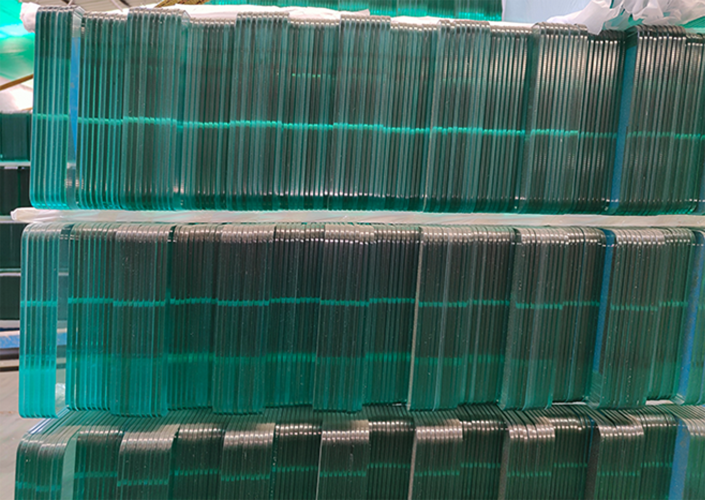Nov . 11, 2024 07:47 Back to list
special glass types
Special Glass Types Exploring Unique Characteristics and Applications
Glass, a versatile material known for its transparency and durability, comes in various types tailored for specific applications and environments. While we often think of standard glass used in windows or containers, special glass types have emerged to fulfill unique needs in technology, architecture, and art. This article delves into several notable special glass types, their characteristics, and their diverse applications.
1. Laminated Glass
Laminated glass consists of two or more pieces of glass that are bonded together using a polymer interlayer. This type of glass is renowned for its safety features. When shattered, laminated glass holds together, reducing the risk of injury from sharp edges. Common applications include automotive windshields, skylights, and building facades. Additionally, laminated glass provides sound insulation, making it an excellent choice for urban environments where noise pollution is a concern.
2. Tempered Glass
Tempered glass is produced through a process of extreme heating and rapid cooling, making it significantly stronger than regular glass. This toughened nature allows it to withstand high-impact forces and thermal shocks. In the event of breakage, tempered glass shatters into small, blunt pieces, reducing the risk of injury. It is commonly used in shower doors, glass doors, and facades in commercial buildings, where safety and resilience are paramount.
3
. Insulated Glass Units (IGUs)Insulated Glass Units (IGUs) consist of two or more glass panes separated by a spacer and sealed to create an air gap. This design enhances thermal performance by minimizing heat transfer, making IGUs essential for energy-efficient windows. They help regulate indoor temperatures, reducing heating and cooling costs. This type of glass is particularly popular in residential buildings, high-rise offices, and commercial structures, where energy efficiency is increasingly prioritized.
4. Low-E Glass
special glass types

Low-emissivity (Low-E) glass is coated with a thin layer of metallic oxide that reflects heat while allowing visible light to pass through. This innovative glass type helps improve energy efficiency by keeping interiors comfortable in varying weather conditions. Low-E glass is particularly effective in reducing UV radiation, protecting furnishings from fading and enhancing indoor comfort. It’s commonly used in residential and commercial windows to promote sustainability and energy conservation.
5. Borosilicate Glass
Borosilicate glass is known for its exceptional thermal resistance and low thermal expansion coefficient. It can withstand extreme temperature changes, making it ideal for laboratory glassware, kitchen bakeware, and scientific equipment. Unlike ordinary glass, borosilicate glass is less prone to cracking under temperature shifts, which adds to its longevity and reliability in demanding environments.
6. Smart Glass
Smart glass, also known as switchable glass, can change its light transmission properties when electrically activated. This technology allows the glass to become opaque or transparent, providing enhanced privacy and glare control. It’s increasingly used in modern architecture for buildings and vehicles, where occupant comfort and aesthetics are critical. Smart glass systems can also contribute to energy savings by adjusting to light conditions, thus reducing the need for artificial lighting or heating.
7. Fiberglass and Glass Fiber Composites
Fiberglass is a type of reinforced plastic made from glass fibers and resin. It is lightweight yet incredibly strong, making it suitable for various uses, including boat hulls, car bodies, and construction materials. Glass fiber composites provide excellent durability and resistance to corrosion, making them ideal for outdoor applications and industries that require materials with high strength and low weight.
Conclusion
The evolution of special glass types has opened up new possibilities in design, safety, and functionality. From laminated and tempered glass for safety to low-E glass for energy efficiency, each type serves a unique purpose in our daily lives. As technology advances, we can expect even more innovative glass solutions that enhance our environments, contributing to both aesthetics and functionality. Whether in architecture, automotive design, or industrial applications, special glass continues to play an integral role in shaping our world.
-
Safety and Style with Premium Laminated Glass Solutions
NewsJun.24,2025
-
Reinvents Security with Premium Wired Glass
NewsJun.24,2025
-
Premium Float Glass Line for Modern Architecture
NewsJun.24,2025
-
Low Emissivity Glass for Energy-Efficient Architecture
NewsJun.24,2025
-
High-Performance Insulated Glass Solutions for Modern Architecture
NewsJun.24,2025
-
Elevates Interior Style with Premium Silver Mirror
NewsJun.24,2025
Related PRODUCTS














